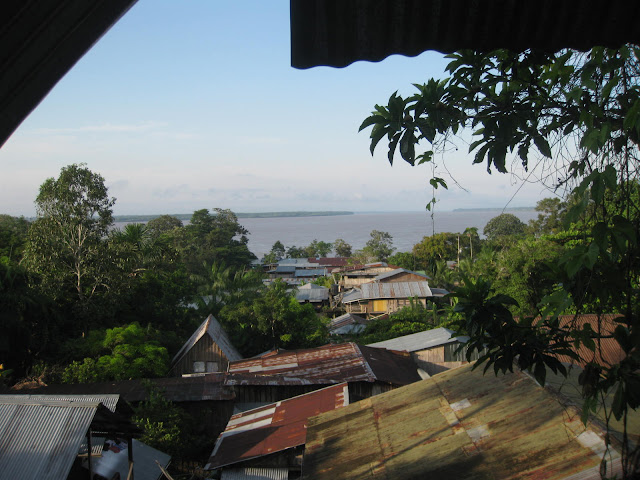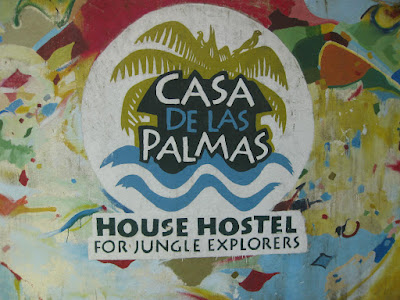 |
Nile River "green belt," where most tourist attractions are located. The Sphinx is toward the top.
|
It's high season in Egypt now and when I was there last month, a veritable crush of tourists was swarming the Giza Plateau. It's home to the tallest pyramids and of course the Sphinx, the Great Sphinx, the famous half-man, half-lion figure bellied down silently onto the desert floor for nigh on four thousand years now. Yes, four thousand.
Arguably the most famous statue in the world, certainly one of the largest, over the millennia the Sphinx has become more than a symbol of ancient Egypt. It's become the embodiment of mystery associated with one of the earliest and grandest civilizations in history.
After centuries of research, archaeologists now know much about the ancient Egyptians -- with still more, of course, that they don't. For example, they're still haggling over exactly how the Great Pyramids were built. And exactly where that the ancient Egyptians came from.
Did I say that the Sphinx has been perching there silently all this time? Well, not according to some locals anyhow. While running the gauntlet of souvenir stalls, camel jockeys offering rides, agents offering personalized tours, etc., I came upon a man claiming that the mysterious figure is not so silent after all.
"Ohh, but the Great Sphinx, it speaks," he informed we passers-by, with wide-eyed fervor. "It does?" I paused in mid-step. "Yes, but only if you know how to listen," he went on.
He pulled back the curtain to a stall to reveal a woman with head covered of black veil, the classic burka, with only a slit for the eyes. She awaited next to a tray of crystals pointing up crazily at different angles, obviously a type of crystal ball.
The man smiled like he knew a great secret and nodded me in toward her.
 |
Smaller version of the Sphinx in Memphis. Note row of stalls behind me, to be passed by as you enter the site. |
 |
Our tour group, before statue of Ramses the Great. Note that I'm the only one there without shades on. Big mistake. |
 |
| Stepped pyramid or stepped tomb at Saqqara, a necropolis, where ancient Egyptian royalty are buried. Another of the archaeological sites we visited that day on our tour. You can go inside some of these and I descended into two. |
By the time I encountered that fortune teller, or whatever he was, our little tour group had already been to three archaeological sites along the Nile River green belt. Six hours of being bounced around on rutted and pot-holed roads. I'd neglected to bring sunglasses and the glare off the sand had left me with a throbbing headache.
To add to it, minutes before I had fended off a seller of papyrus scrolls with phosphorescent highlights purported to glow in the dark. In short, by then I was in no mood for another sales hook.
As I hurried away, he called out after me, "Sir, best way to see the Sphinx is with eyes closed! Eyes closed! Close your eyes and listen -- LISTEN TO HIM!!!"
Just what I needed, I muttered as we made our way toward the entrance of the Giza Plateau, advice from a mad Seer of the Desert. Throw him in with the hawkers of rings and necklaces adorned with stones of magical healing qualities, the oils of lotus flowers crushed beneath the feet of chaste young women, the perfumes favored by Cleopatra herself, and more, much more...
 |
| The pyramids of the Giza Plateau, outside the metropolis of Cairo. I had no sooner snapped this photo when... |
 |
| A man popped in front to offer me a camel ride! |
 |
Railway Station at Alexandria, with the smiling little you-know-whats at bottom eyeing me up as fresh meat! To extract money from me, in other words. |
"High Season" is not quite the term to describe Egypt this past November, when I was there. It was the 100th anniversary of the discovery of King Tutankhamun's tomb; the pharaoh popularly known as "King Tut." Television cameras and people protruding out microphones were doing interviews at many sites and museums, causing more than the usual commotion.
In addition, five tombs discovered earlier this year were being unveiled in the Saqqara necropolis. The term means "city of the dead" and is basically a cemetery with monuments and tombs stretching out for miles. When we visited there, more media and more tour groups than usual were prowling about.
And of course, the international Climate Change Summit had to place at the Egyptian resort town of Sharm El-Sheikh that month...with many of the participants taking in the sights before or after gathering to save the world from catastrophe.
These and more made for record crowds up and down the green-belt, crowds that even Ramses the Great might've been impressed with. (But then again, after learning about his accomplishments and personality, maybe not.)
 |
| Statue of Ramses II, also known as Ramses the Great. He ruled for 66 years, sired 150 children, conquered numerous other kingdoms. I later viewed his mummy -- 4,200 years old! |
Now you might be wondering, was it worth it to endure such a grueling day, the crowds, the touts and hustlers, some even of grade school age? The touristic chaos that is Egypt during such a high season? Was it all really worth it?
What I concluded is, if you ever are in a position to go, yes, regardless of all that and more, you can and you should. Like the Grand Canyon in the U.S. and the Great Wall in China, Egypt's own versions are marvels of the highest order and despite the travails listed above, should not be missed.
 |
| Me recovering after a long, but good day of touring. |
For those who've been considering a trip to Egypt:
Keep in mind, I was in Egypt for two weeks plus and most of that described above took place only one day, the day I went along with that tour group. An extraordinary confluence of events was taking place then, a confluence unlikely to occur again. In following days, for the most part, I got off the tourist path and the experience was much more pleasant.
Travel tip to avoid many of the hucksters and associated stresses:
Do not, repeat DO NOT let them lure you into their stalls or shops. Ignore them or listen to as much of their pitch as you can, then jab your heel into the sand and walk away!
All in all, touring Egypt will be a much better experience.
END



















































